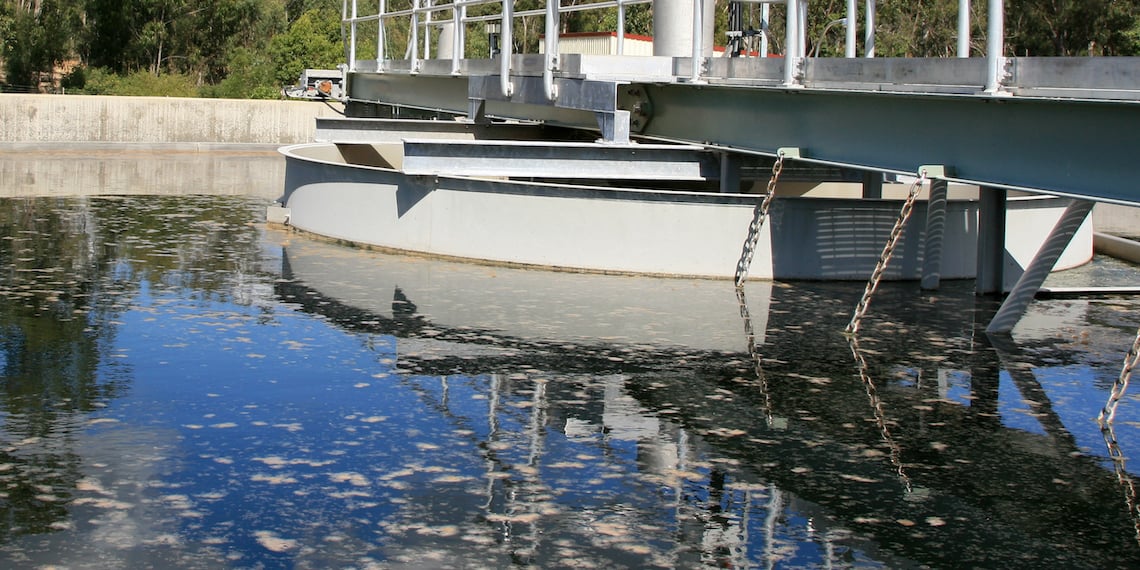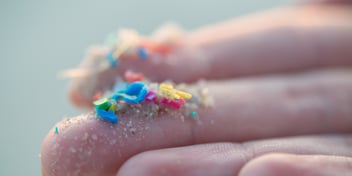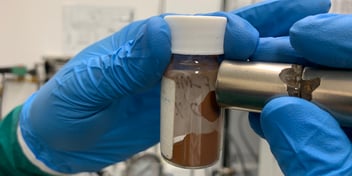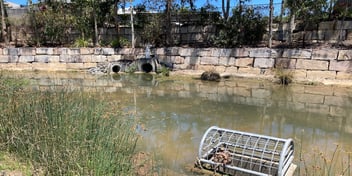Standardising analysis of microplastics in biosolids

As microplastic pollution continues to proliferate worldwide, researchers are turning their attention to developing standardised methods of analysis in a bid to understand the contaminant better, including how different sources and forms of microplastic impact the environment.
This year’s World Environment Day (5 June) is all about beating plastic pollution, encouraging individuals, businesses and governments worldwide to help tackle the crisis. While macroplastic pollution is a highly visible issue, addressing the impacts of microplastic pollution requires a more developed understanding of the problem.
Flinders University researchers are studying the prevalence of microplastics within the wastewater treatment context with the aim of developing a standardised method of assessment, and to figure out where these microplastics come from and end up.
When it comes to trying to mitigate or abate the proliferation of microplastics pollution, Flinders University Associate Professor Ingo Koeper said developing standardised techniques to measure and identify microplastics is a crucial first step.
“When we started this work, it was clear there was no standardisation for microplastic analysis. Inaccurate techniques are often used, making results really hard to compare,” he said.
“Some research is preoccupied with counting microplastics. And, as a chemist, I find this very frustrating. We need to go further and not just count but actually identify the different types of plastics.
“A lot of our work is about establishing methods to understand microplastics better. We want to develop a method that makes it relatively easy to both count and identify microplastics present within a certain environment.
“We need a more systematic approach to this issue. Counting microplastics is one thing, but we need to understand how they change and interact with the environment. Ideally, we want to know how they change over time.”
Koeper said that, from a legislative point of view, there are no rules around microplastic streams yet, but having a standarised method for assessment would help this process greatly, and assist in the development of more effective technologies.
“Even if we are going to come up with some great new technologies to remediate microplastic pollution, we still need to start by having some standardised techniques to measure the before and after,” he said.
Flinders University PhD Candidate Anggelia Essi Christian said understanding more about microplastic streams would aid in the further development of microplastic pollution policy and regulation.
“If we want to be able to enforce a policy around how to reduce microplastic pollution, it is also important to trace where the microplastic is coming from. It could be from washing machines, or kitchen wastewater, or industrial processes,” she said.
“We need to be able to measure the volume and type of plastics to identify their source, and to then be able to develop remediation methods.”
Addressing biosolids
Koeper said more is known about microplastic pollution in the marine environment, but proliferation is not limited to the ocean – with microplastics in biosolids a key example of how plastics make their way onto land.
“Microplastics are in many places that are not marine or aquatic environments. Through discussion with SA Water, the question they had was: where do the microplastics that enter the wastewater treatment plant end up?” he said.
“In terms of toxicity, it’s not actually clear yet whether microplastic introduced to soils via biosolids is a bad thing or not. We probably already eat a lot of plastic every year. But the impacts to human health have not been defined yet.”
While the first paper published in the study is a literature review, the research team is working on more papers all relating to the same study. Christian said the review outlines the importance of continuing to understand microplastics better.
“[The review] is based on the current research we have about the toxicity of microplastic, specifically for soil environments, such as when biosolids are used as fertiliser or placed in landfill,” she said.
“The evidence we found is conflicted. Some studies show negative impacts, some show no impact. There is no clear evidence that microplastic has a negative impact on soil environments.
“However, after reviewing the literature, I would say it all really depends on the type, size, concentration of microplastics, as well as their exposure time. Further, lab studies are hard to compare to how microplastics interact with the actual environment.”
Christian said that when microplastics are tested in labs, researchers are often limited to using pure polymers, which could have different chemistry structures to the microplastics that are found in the environment.
“Once a microplastic enters the environment, it is exposed to a variety of different things – sun, rain, other chemicals or contaminants. This is particularly true in the wastewater treatment environment, which is a concentration of a whole range of different things,” she said.
“This is why our project is aiming to characterise microplastics, count and also look at size. These elements likely influence the effect of the microplastic on the soil environment.”
Findings and future trends
While the team has established a methodology to analyse the amount, size, fractions and composition of microplastics samples from the treatment plant, it’s been noticed that the variety of microplastics coming into the treatment plant is seasonal.
“Some initial findings point to the fact that the mix of microplastics that come into wastewater treatment plants is not the same as what comes out,” Koeper said.
“They change over time, and it also depends on the season. The input mixtures of microplastics change depending on the time of year. What the wastewater treatment plant is really interested in is the efficacy of the treatment process. Does the same mixture come in and go out, or are there changes?”
For example, some lightweight microplastics are already removed from the wastewater stream, Koeper said: “For others, it is pretty difficult to remove them from the biosolids. It’s hard to separate them. But it could be a whole new research field in future”.
“There are people looking into microbial digestion of microplastics, which is another area where research questions could go. But, again, we need standardised methodologies so that we can test this effectively,” he said.
“How microplastics interact with other contaminants in the environment is definitely something that people are looking into, as well.
“While we don’t have any solid evidence to suggest that microplastics are detrimental to human health, we do need to be looking at how this impacts the environment. And we absolutely need to be finding ways to reduce the amount we are introducing into the environment.”



